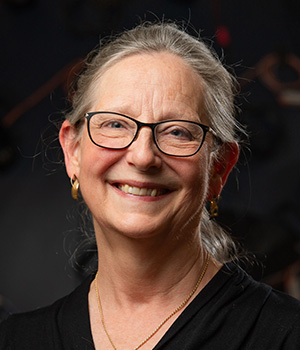Flicker:
Naomi Miller, Pacific Northwest National Laboratory
Location: Sutton North
WednesdayMarch 19, 2025
10:30 am - 11:30 am ET
Credits 1 LU | HSW
Intermediate
You might see it at the Paris Opera House, or your favorite bistro, or your home bathroom, or the car driving toward you. Or, you may see no repeating patterns (i.e., the phantom array effect) from flickering lights at all. Therein lies the quandary: A chunk of observers see nothing; while others may experience headaches, migraines, disorientation, or worse from this flavor of temporal light modulation (“flicker”). In the effort to ensure energy-efficient lighting technologies also provide comfortable environments, PNNL completed an experiment comparing the sensitivity of migraineurs and non-migraineurs. There was a wide range of visibility to surprisingly high frequencies of modulation, as well as differences in sensitivity and in post-experiment outcomes between the groups. Beyond these experimental results, this presentation will discuss new data on the prevalence of flicker in schools, the forthcoming specification guidance in IES TM-39, and the new phantom array visibility metric. Whether you see flicker or not, come to learn why this is an increasing concern with LED systems and how it can be fixed.
Knowledge of basic lighting terminology, especially temporal light modulation is recommended.
Learning Objectives
- Comprehend why LED lighting systems are more prone to flicker than conventional sources.
- Be able to list potential health implications of temporal light modulation (headaches, nausea, migraine, disorientation, etc.)
- Experience what the stroboscopic effect looks like, as well as the phantom array effect. Articulate the four principal waveform characteristics contributing to flicker visibility and detection.
- Understand the three recommended metrics that apply to different frequency ranges, and target values for these ranges in different applications and for different populations.
Speaker

Naomi Miller, PNNL, FIES, FIALD survived a very long career, first as an architectural lighting designer in San Francisco and Upstate New York, and then as a Senior Lighting Scientist at Pacific Northwest National Laboratory. She has Emerita status now, and seems to be failing retirement because she is driven to eradicate flicker and glare from LED lighting systems before her obituary is written. In 2023 she received the CIE Waldram Gold Pin for Outstanding Contributions in Applied Illuminating Engineering, and in 2024 received the IES Medal Award, their top technical award. She is both a Fellow of the Illuminating Engineering Society and the International Association of Lighting Designers.
